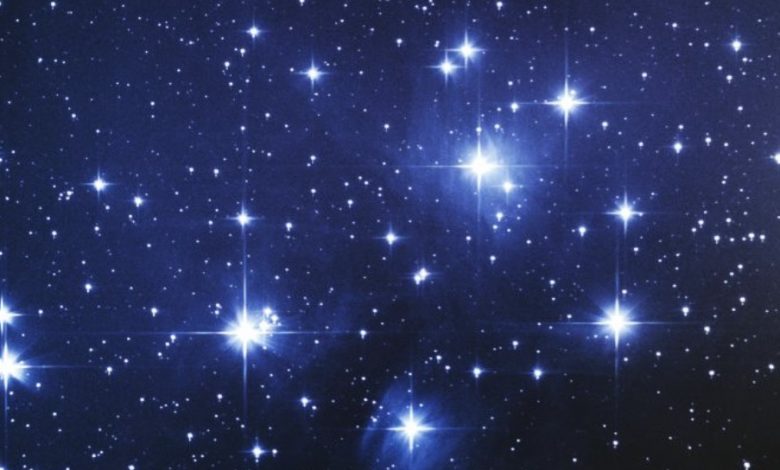Formation and evolution

Formation and evolution
Main article: Stellar evolution
Stellar evolution of low-mass (left cycle) and high-mass (right cycle) stars, with examples in italics
Stars condense from regions of space of higher matter density, yet those regions are less dense than within a vacuum chamber. These regions—known as molecular clouds—consist mostly of hydrogen, with about 23 to 28 percent helium and a few percent heavier elements. One example of such a star-forming region is the Orion Nebula.[53] Most stars form in groups of dozens to hundreds of thousands of stars.[54] Massive stars in these groups may powerfully illuminate those clouds, ionizing the hydrogen, and creating H II regions. Such feedback effects, from star formation, may ultimately disrupt the cloud and prevent further star formation.[55]
All stars spend the majority of their existence as main sequence stars, fueled primarily by the nuclear fusion of hydrogen into helium within their cores. However, stars of different masses have markedly different properties at various stages of their development. The ultimate fate of more massive stars differs from that of less massive stars, as do their luminosities and the impact they have on their environment. Accordingly, astronomers often group stars by their mass:[56]
Very low mass stars, with masses below 0.5 M☉, are fully convective and distribute helium evenly throughout the whole star while on the main sequence. Therefore, they never undergo shell burning and never become red giants. After exhausting their hydrogen they become helium white dwarfs and slowly cool.[57] As the lifetime of 0.5 M☉ stars is longer than the age of the universe, no such star has yet reached the white dwarf stage.
Low mass stars (including the Sun), with a mass between 0.5 M☉ and 1.8–2.5 M☉ depending on composition, do become red giants as their core hydrogen is depleted and they begin to burn helium in core in a helium flash; they develop a degenerate carbon-oxygen core later on the asymptotic giant branch; they finally blow off their outer shell as a planetary nebula and leave behind their core in the form of a white dwarf.
Intermediate-mass stars, between 1.8–2.5 M☉ and 5–10 M☉, pass through evolutionary stages similar to low mass stars, but after a relatively short period on the red-giant branch they ignite helium without a flash and spend an extended period in the red clump before forming a degenerate carbon-oxygen core.
Massive stars generally have a minimum mass of 7–10 M☉ (possibly as low as 5–6 M☉). After exhausting the hydrogen at the core these stars become supergiants and go on to fuse elements heavier than helium. They end their lives when their cores collapse and they explode as supernovae.
